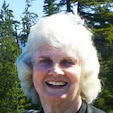crayon, watercolour and ink
©2025 Charlene Brown
I happened to read about the two Advisories on Climate Change and Human Rights listed below in The Daily Difference - The Carbon Almanac the day after the Trump/Putin negotiations in Alaska made ‘progress’ but did not end the Russian-Ukraine war. Couldn’t help wondering if, among the many immediate horrors of warfare, its long term cumulative (and avoidable) carbon emissions, and their effect on global heating was ever considered by either Russia or America. Or anybody.
- On July 3, 2025, the Inter-American Court of Human Rights (IACHR) issued Advisory Opinion No.32, a 234 page document that is the longest advisory opinion that has ever been issue by the IACHR ̶ pretty much guaranteeing that very few people will read it other than those who are being paid to do so. In it, the court says “states have legal obligations to protect people alive today and future generations from the impacts of climate breakdown,” ruling that access to a stable climate is a human right that states must protect. Some of the actions that must be taken include working on cutting greenhouse gas emissions, cooperating internationally, guarding against the threat of climate disinformation, adapting to evolving needs and utilizing the best available science to inform decisions.
- On July 23, 2025, the International Court of Justice (ICJ), which is the United Nations’ top court, released an advisory opinion stating that “countries could be in violation of international law if they fail to take measures to protect the planet from climate change, and nations harmed by its effects could be entitled to reparations.” It affirms a simple truth of climate justice: Those who did the least to fuel this crisis deserve protection, reparations and a future.”





























































